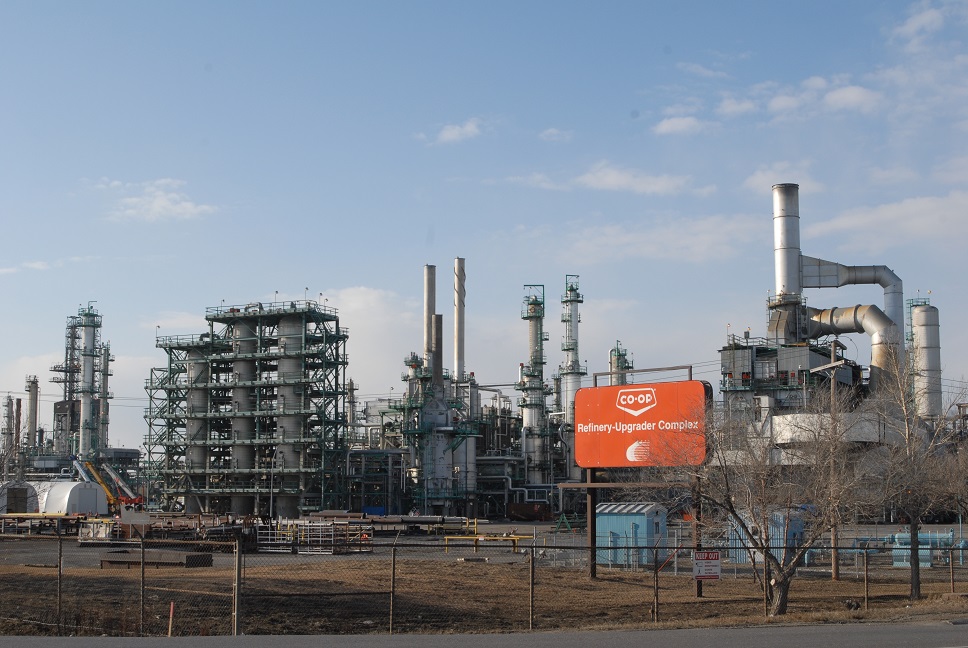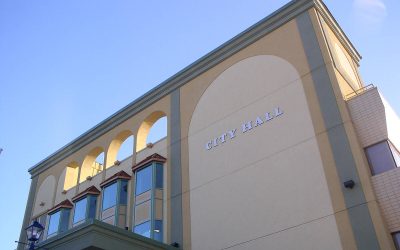This is Part 4 of a 6-part series on the two heavy oil upgraders built in Saskatchewan is based on the book So Much More We Can Be: Saskatchewan’s Paradigm Shift and the Final Chapter on the Devine Government 1982-1991, by Edward Willett, Gerard Lucyshyn and Joseph Ralko. It was published this in 2021 by the Frontier Centre for Public Policy and was recently released on Amazon.ca
In 2010 I did a story on the Consumers’ Co-operative Refineries Limited (CCRL). I noted at the time, the refinery had a nameplate capacity of 100,000 bpd, which was inclusive of the upgrader. That story explained there were two crude refining units. The first, with a 60,000 bpd capacity, ran heavy crude oil primarily from the Lloydminster area. The second, which was part of a 2003 expansion, handles 40,000 bpd of heavy sour synthetic crude from the Fort McMurray region. FCL spent the next four years building an expansion that would add 30,000 bpd capacity, to handle additional sweet synthetic crude from Fort McMurray. That brought the refinery complex’s nameplate capacity up to 130,000 bpd.
While the general public might think of Federated Co-operatives Ltd. as their grocery store, or their lumber yard, the reality is that it’s principally an energy company that also sells food, ag products and lumber.
In FCL’s 2021 Annual Report, CEO Scott Banda, who retired on May 9, said, “Co-op is planning for a future in energy – which is the largest part of our business and our profitability.” In 2021, FCL had $9.1 billion in sales, of which $5.2 billion was in energy. And the Regina refinery, of which the NewGrade Upgrader is a key part, is an absolute lynchpin of that.
Indeed, when Cenovus bought Husky, it found itself with hundreds of gas stations it didn’t want. Co-op bought 181 retail fuel sites, with the deal closing this year. It did that to provide additional market for its refined products capacity, according to Banda. “We are not running at capacity, and haven’t been for a while.”
“By building on our network of gas bars, FCL can increase the use of the capacity of the Co-op Refining Complex in Regina, and the Co-op Ethanol Complex near Belle Plaine, Saskatchewan, by supplying this broader network of local co ops and independent fuel suppliers,” Banda said.
Gil Le Dressay has spent 43 years with Federated Co-operatives Ltd.’s Regina refinery, starting as a process utility operator and working up to vice president of refinery operations then vice president of manufacturing.
Le Dressay responded to a series of questions by email on Sept. 8. He said of its early days, “You have to remember, at that time, the Heavy Oil Upgrader was the first of its kind in Canada. From the outset, it was an ambitious, innovative and strategic project, one that brought people together to ensure that our refinery and province were set up well for the future.
“The construction of the upgrader would allow our refinery to secure competitive feedstock, to maintain high processing rates and, most importantly, to provide the Co-operative Retailing System (CRS) with a lower cost for transportation fuels – ultimately providing our owners with the highest rate of return.”
There were some tough times and controversy for the Regina upgrader. Its early days were not smooth. Asked what it took to resolve all that, and how have things been going since, Le Dressay said, “A critical project like the upgrader doesn’t just happen successfully. It requires considerable preparation and planning over its entire life cycle. This included upgrades to its overall design that would ensure it operated safely and efficiently in cold weather, as well as modifications designed to improve the reliability of key processes and functions within the upgrader system.
“Since then, we have built on that great work to maintain the safety and reliability of the upgrader. Today, it continues to play a key role in our ability to fuel Western Canada.”
What would the refinery be today, if the upgrader had not been built? Le Dressay said, “If you look at the history of any organization, there are moments and projects that helped define them. Our upgrader is one such project. It was a complete game changer that allowed us to remain competitive by reducing the cost of production, and ultimately, of transportation fuels provided to the CRS. It also paved the way for our Section IV expansion. This allowed us to further optimize existing areas of our facility, setting us up well for the eventual growth of gasoline and diesel sales within the CRS.”
That would include the eventual Section V, which was added to the refinery over the last decade. “The upgrader helped pave the way for renewed growth and optimism at our facility, and within the larger CRS. This includes the addition of Section V and the growth of gasoline and diesel sales within the CRS,” he said.
“Because of the upgrader, approximately, 40 per cent of our feedstock comes from Saskatchewan heavy oil.”
This past spring, Cenovus said they would be using the Lloydminster Upgrader to refine oilsands product, and selling Lloyd Blend on the open market. Asked if this would have any impact on the Regina operation, perhaps providing additional feedstock for FCL, Le Dressay said, “Ingenuity and innovation continue to fuel our industry. There is potential to use other feedstocks in areas of our operation.”
When it comes to the monetary impact for FCL, and the province, by having the addition of the Regina upgrader, Le Dressay said, “From an operational point of view, the upgrader has allowed us to process 16 million barrels of heavy oil per year over the past 30 years. It has had an even greater impact on our province and its people.”
That included the creation of more than 100 permanent jobs on site and full-time equivalent contractor positions, as well as jobs within the industry and related industries. There were the royalties for the Province of Saskatchewan. And he noted FCL makes capital investments of tens of millions of dollars annually.
FCL is now working on carbon capture at the refinery. Le Dressay said, “FCL’s initial carbon capture facilities will focus on hydrogen production, supporting the Upgrader and our Section IV operations. The end goal is to meet our corporate objectives by lowering carbon emissions by over 40 per cent of 2015 levels by 2030 as we aspire to be net zero by 2050.
“Taking steps to reduce our carbon footprint will ultimately lead to the long-term sustainability of not only the Upgrader, but our entire operation.”
He concluded, “The upgrader represented a significant and exciting time in the history of the Co-op Refinery Complex. It created jobs and sustainable path for our business. Our operation would not be as competitive and successful without it.”
Brian Zinchuk is editor and owner of PipelineOnline.ca and occasional contributor to the Frontier Centre for Public Policy. He can be reached at brian.zinchuk@pipelineonline.ca.
.
Read the series “So Much More We Can Be” – the Grant Devine-era heavy oil upgraders and their lasting impact
Part 2: Grant Devine’s Motivation to Build Upgraders While They Had the Chance
Part 3: The Lloydminster Bi-Provincial Upgrader Doubled the City in Size



